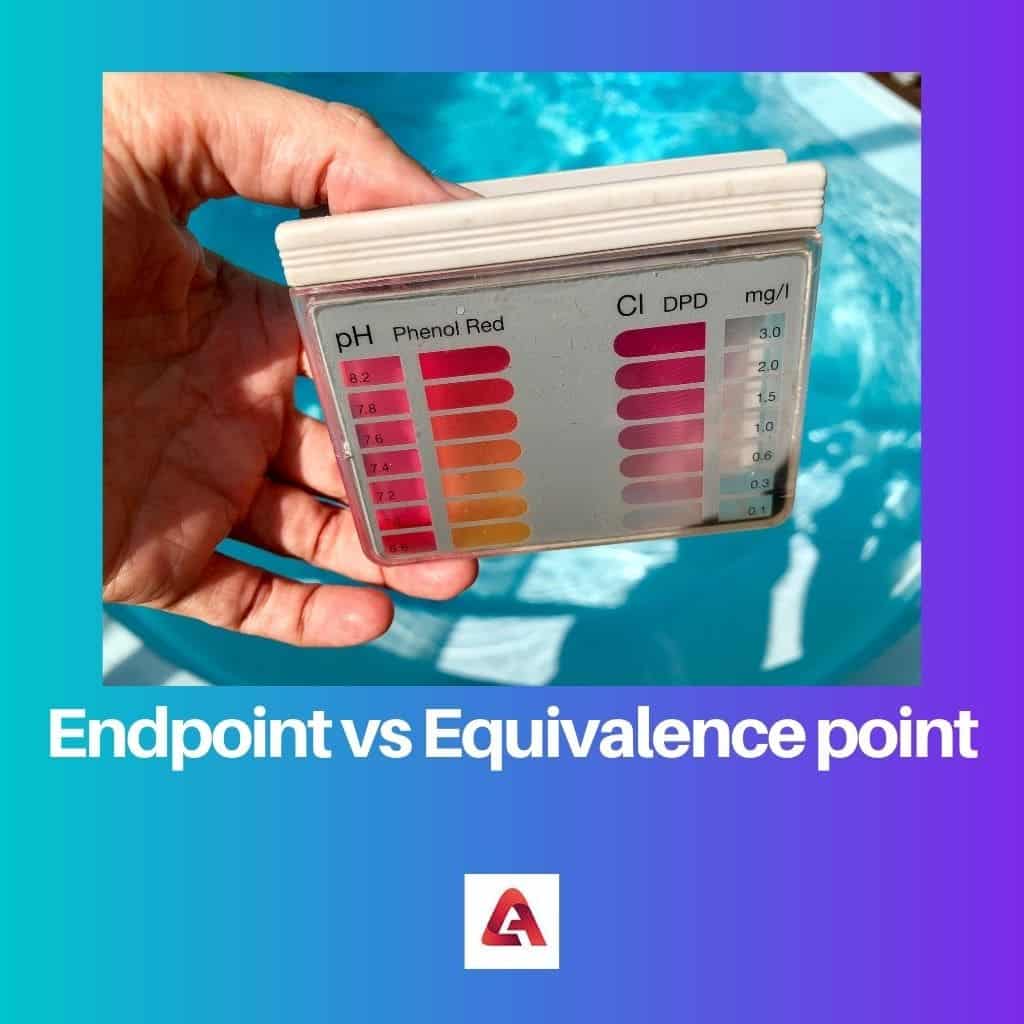Science is a complex system that gives an insight into the world, insight into things that cannot be seen with bare eyes. Things are more complicated and complex than visible to an average person.
Science gives reasoning for several things that are not abstract but proven practices in several ways.
Titration in chemistry is a method used for measuring the concentration of an unknown solution that reacts with a known concentration. Titration is essential for pharmaceutical companies.
A solution of known concentration is called an analyte, and a solution of unknown concentration is known as a titrant.
The titration process involves several terms other than analyte and titrant, like a pipette, brunette, endpoint, equivalence point, etc.
Key Takeaways
- Endpoint is the point in a titration where the indicator changes color, signaling that a sufficient amount of titrant has been added to the analyte to reach a desired level of reaction.
- The equivalence point is the point in a titration where the exact stoichiometric amount of titrant has been added to the analyte, resulting in a completely neutralized solution.
- The difference between the endpoint and equivalence point is that an observable color change in the indicator determines the endpoint. In contrast, the equivalence point represents the titrant’s exact stoichiometric neutralization of the analyte.
Endpoint vs Equivalence Point
The difference between endpoint and equivalence point is their occurrence. Endpoint and equivalence point are different stages in the titration method; they have a lot of differences.

Comparison Table
| Parameters of Comparison | Endpoint | Equivalence Point |
|---|---|---|
| Occurrence | Occurs after equivalence point. | Occurs before the endpoint. |
| Frequency of occurrence | It occurs only one time. | It can occur more than one time. |
| Indication of occurrence | It is obtained when titration is complete. | It does not indicate the completion of titration. |
| Completion of reaction | Does not indicate a complete reaction of analyte and titrant. | Does indicate a complete reaction of analyte and titrant. |
| Change in colour indicates | Endpoint reached | Approximation of equivalence point |
What is Endpoint?
An endpoint is a point at which the indicator changes its colour due to a change in pH level. This happens when the trident and analyte are mixed in titration.
The endpoint is considered an ideal point for the completion of titration. Endpoint is an intermediate point and not necessarily where the reaction ends.
It comes after the equivalence point. In this stage, indicators change their colour, and results can be derived.
There is only one endpoint in the case of weak acids. When the endpoint is reached in titration, it is indicated by a change in the colour of the solution.
Once the solution starts changing colour, it will persist for 30 seconds.
When more base is added to the titrant’s solution pH level changes which becomes more basic, and the solution changes colour, with an indicator when the titrant’s solution turns pink, which implies an endpoint has been reached.
In some cases, endpoint and equivalence points can also be reached simultaneously. Although both differ, the endpoint is sometimes reached with an equivalence point.

What is Equivalence Point?
The equivalence point is where the amount of titrant added is just enough to neutralise the analyte solution completely.
Equivalence point in titration, specifically in acid-base titrations, a mole of the base equals a mole of acid and indicates that the solution contains only salt and water.
If the base is strong and the acid is relatively weak, it produces salt and is weakly alkaline during titration, resulting in a pH greater than 7.
An equivalence point is also known as a stoichiometric point. Reaching the equivalence point involves change in pH level, conductivity change, temperature change, formation of a precipitate, etc.
To get the same equivalence point as the endpoint, then the pH of the indicator must match the pH at equivalence.
Main Differences Between Endpoint and Equivalence Point
- Endpoints can be reached with or after the point of equivalence.
- Equivalence points can be multiple during titration, but the endpoint is one point and does not occur frequently.
- Endpoint may or may not be the end of the titration, but equivalence is the complete end of titration after resulting in a change of colour of the solution.
- Endpoint is indicated when there is a change in the colour of the solution, but in the case of an equivalence point, a change in the colour of the solution may or may not be visible.
- The equivalence point is reached when the analyte has completely reacted with the titrant, whereas an endpoint does not always indicate that the analyte has completely reacted.
- https://onlinelibrary.wiley.com/doi/abs/10.1002/sim.985
- https://www.sciencedirect.com/science/article/pii/S0008622309007854

This post provides a fantastic comparison between endpoint and equivalence point. The details provided are truly enlightening.
Titration is an important method in chemistry, and this post explains it thoroughly. Great work on comparing endpoint and equivalence point.
The scientific terms used in this post could be a bit overwhelming for some readers, making it a challenging read.
Titration is a crucial method in chemistry, but the complex scientific jargon used here might be a barrier for many readers to understand.
The comparison between endpoint and equivalence point in titration was explained thoroughly. A great post for anyone interested in chemistry.
This post provides valuable information, especially the comparison between endpoint and equivalence point.
The content provided in this article is quite complex and might be difficult for general readers to understand.
Science gives us the basis to understand our surroundings and make informed decisions with all information available. This post is really well written and explained.
I agree, it is really informative.
The post provides a clear explanation of titration and its fundamental concepts.
The detailed information provided in this post is quite significant to better understand titration.
I found this post to be rather complex, and it took quite a bit to comprehend. It could be more reader-friendly.